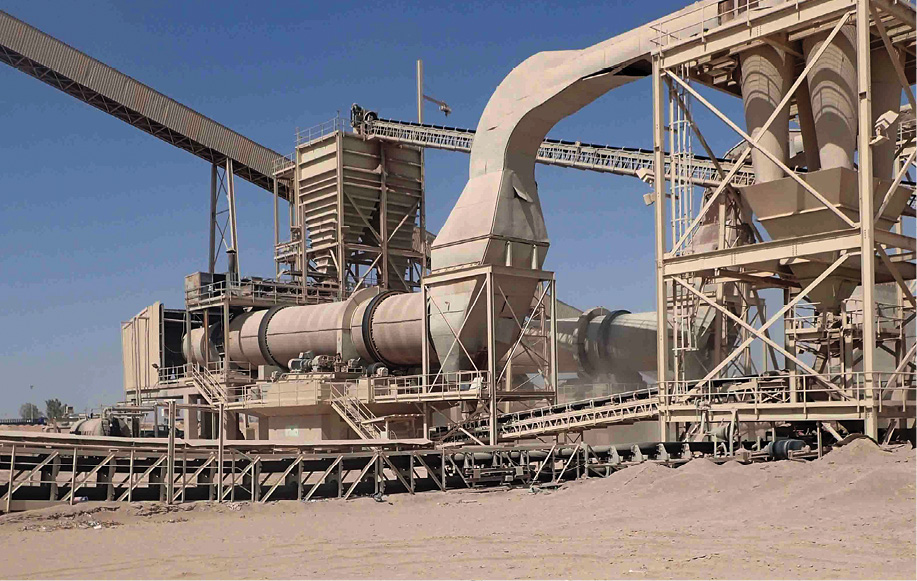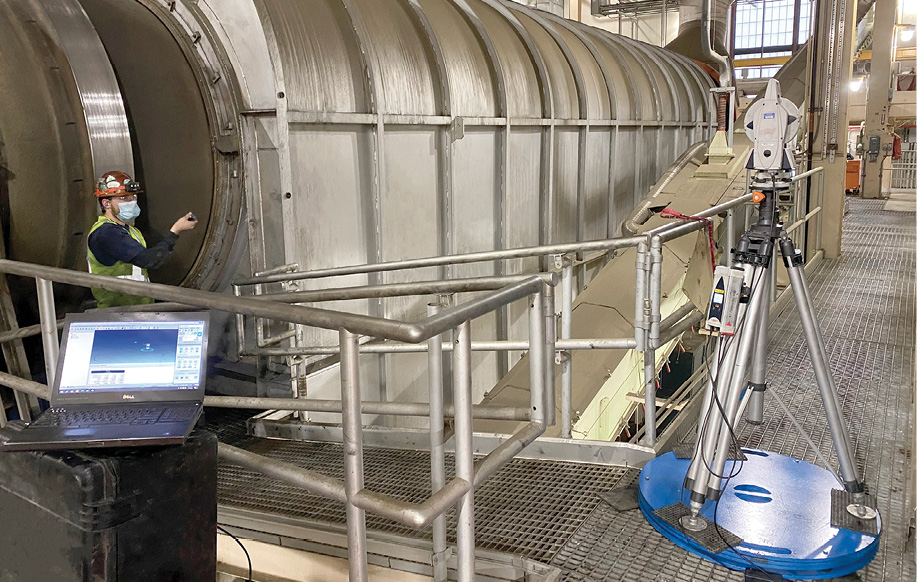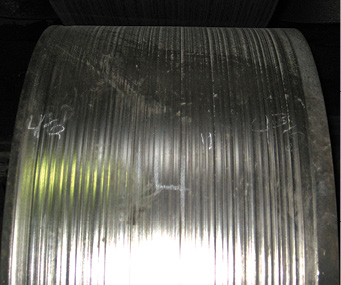The fundamentals of rotary drum maintenance

From lengthy permitting processes to declining ore grades, the mining industry is fraught with challenges, but unnecessary downtime, excessive maintenance costs, and premature failure of rotary equipment shouldn’t be among them.
The mining industry employs rotary drums in a myriad of applications. These diverse machines are customized to suit their roles as scrubbers, kilns, dryers, coolers, and agglomeration drums. Catastrophic failures of these units can put plants out of commission for months waiting on a new unit. And even small repairs can mean weeks of downtime depending on service provider availability, issue severity, and site accessibility, so keeping rotary drums in proper working order at any mine is critical to avoiding excessive downtime and its associated costs.
While each type of rotary drum has varying maintenance needs, some maintenance practices are universal to all drums, no matter their type. These practices are outlined here.
Inspections
By far the most effective (and most overlooked) tool in any maintenance program is an inspection. Whether conducted by an operator, or an external service provider, inspections allow plant managers to catch problems before they have a chance to escalate, while also tracking small changes in equipment over time.
Operators or maintenance personnel should conduct a daily visual inspection of the unit if possible, checking for any signs of wear, damage, or abnormalities such as unusual auditory cues. Critical points of contact, such as between tires and trunnions, as well as between thrust rollers and tires (riding rings), should also be inspected daily.
Operators should have a list of items to examine on a weekly basis as well, such as gear or chain lubrication, condition of bearings, graphite block lubrication, and more. Operators or maintenance personnel should also conduct a more thorough monthly inspection of the unit, assessing components such as v-belts, reducers, couplings, thrust roller assemblies, and more.
These items, and the frequency at which they should be checked, should be laid out in daily, weekly, and monthly check sheets for operators and maintenance personnel as part of a preventative maintenance program. The frequency of checks required depends on the specific operating parameters and should be considered in putting together these lists. The condition of all items, as well as any identified problems and adjustments made, should be recorded.
Plant managers should also have a third-party service provider (or the OEM) come in to conduct an inspection annually for a more thorough review of the equipment’s mechanical condition and stability. This can be co-ordinated with a planned shutdown or other maintenance procedures to avoid additional downtime, as the drum internals will require inspection as well.

Tire and trunnion grinding
Grinding, a means of reconditioning the surface of tires and trunnions to remove the worn surface and reveal the like-new surface below, is conducted by a trained technician with a special machine.
While grinding is carried out in response to wear rather than as a preventative measure, it can help to prevent some major issues. As the main point of contact between the drum and its base, tires and trunnions are often the first place to exhibit wear when a problem exists.
The most common cause of tire and trunnion wear is misalignment. However, a range of other underlying issues could also be the cause, so it is imperative to first identify and resolve the root cause of the problem, as treating only the symptoms will allow wear to immediately resume.
Fugitive material is especially common at mine sites, where drums are often operating outdoors. While it is not uncommon to see trunnion pits full of fugitive material, allowing this to occur can cause severe wear on trunnions, and eventually tires. Operators should regularly clean out trunnion pits to avoid abrasive wear.
Leaving worn tires and trunnion wheels untreated exacerbates wear on all drum components, as it changes the alignment of the drum, putting stress on the rest of the system.
Alignment
As with grinding, alignment addresses the relationship of the drum to its base. Unlike grinding, however, realignment is a preventative measure that should be conducted on a regular basis, the frequency of which depends on the unit’s specific operating conditions.
A rotary drum can naturally fall out of alignment as part of normal wear and tear. Mine sites working with high impact loads and materials with a high bulk density are likely to see their drums fall out of alignment more quickly.
As a drum falls out of alignment, the resulting imbalance puts increasing stress on all components. If allowed to continue, this eventually accelerates wear, leading to more serious problems such as bearing failures and damage to gears, tires, trunnions, and more. Damage is further exacerbated by the already-harsh conditions characteristic of so many mine sites.
In addition to regular realignment, a drum should also be realigned after any major repairs, such as tire or trunnion grinding, as these procedures affect the base conditions.
Maintaining proper drum float
Drum “float” refers to the position of the drum in relation to the thrust rollers, which are designed to prevent the drum from drifting longitudinally.

seen on a trunnion wheel. CREDIT: FEECO
Thrust rollers are positioned on each side of the uphill and downhill tires. During operation, the drum will ideally not ride hard against any of the thrust rollers, though minimal contact is often acceptable. If the drum is allowed to push excessively against a thrust roller, the thrust roller and potentially the tire will become worn and the drum will fall out of balance, again adding unnecessary stress to its many components. In severe cases where thrust roller bearings are allowed to fail, the drum may dismantle the thrust roller shaft, and in turn, roll off its base, resulting in catastrophic failure.
Drum float, or how the drum is positioned between thrust rollers, should be checked daily. Float changes over time and requires routine adjustment through a process known as drum training.
Training involves skewing the trunnion bearings in small increments to reposition the drum for proper float. If excessive training is required, or a drum regularly falls out of float, an underlying issue could be to blame and should be investigated. Training should only be conducted by trained personnel, as improper adjustments can result in damage to the unit.
Routine maintenance
Most rotary drums are generally low maintenance. However, there are several moving parts that require proper lubrication; bearings, chains, gears, reducers, and graphite blocks must always be properly lubricated. Oil should be changed in gear boxes and reducers as recommended, and any components exhibiting wear, such as seal leaves, bearings, and the like, replaced as needed.
Routine maintenance is even more critical in the mining industry, where harsh operating conditions and minimal off-time tend to increase the rate of wear on equipment, and the rate at which problems escalate if not immediately addressed.
Keeping wear-critical parts on hand
While most plants benefit from keeping wear-critical parts on hand, this practice can be a lifeline for mining operations, which are often remotely located and can’t afford to hold off production waiting on a part. Keeping wear-critical parts on hand can mean the difference between hours and weeks of downtime.
Items such as trunnion bearings, thrust roller assemblies, thrust roller bearings, and graphite blocks, should be kept in stock for a quick changeout.
Replacing internals as needed
Internals vary across the different types of drums but are almost always essential to the performance of the unit, no matter what kind they are. In addition to inspecting internals as production schedules allow, worn internals should be replaced on an as-needed basis.
Cleanout
Mine sites should also make it a priority to regularly clean out their rotary equipment to avoid buildup, which adds unnecessary weight to the drum, putting undue stress on all components.
Many of the materials the mining industry works with also present unique challenges that make cleanout essential as well. Potash, for example, is corrosive and can cause accelerated wear on equipment if not cleaned out. Likewise, gypsum can harden in place if not cleaned out, making the removal of any residual material critical to avoiding potential damage.
Seasonal mining operations, or those simply shutting down the plant for an extended period, should always clean out their rotary drums prior to off-season to prevent additional wear as the unit sits.
Training plant personnel
Small mistakes can have catastrophic consequences, making trained operators and maintenance personnel pivotal to the longevity of equipment.
Plant managers should train anyone working with the drum on how to properly operate and maintain the unit, as well as how to safely inspect the unit and look for signs of potential trouble.
The harsh conditions associated with mine sites and processing plants makes maintaining rotary equipment especially critical. Regular inspections, routine realignment, tire and trunnion grinding as needed, as well as maintaining proper drum float, keeping up on routine maintenance, regular cleanouts, and operator training, are the key to a successful preventative maintenance program for rotary drums in the mining industry.
Craig Peppin is customer service manager and Carrie Carlson is a technical writer at FEECO International.
Comments
Horacio Torres
great article